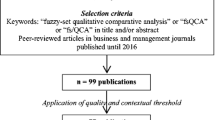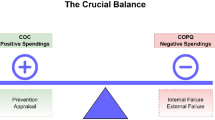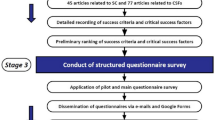Abstract
The construction industry has a complex and dynamic environment. It consists different professions and is intertwined with other industries. This results in construction firms as very sensitive to both internal and external factors. Correct strategies should be chosen and used effectively to reduce the impact of these factors or benefit from them. In this paper, a methodology for determining proper strategies was introduced. For this purpose in the first part of the study, 50 large-scaled construction firms in Turkey were examined by a Strengths, Weaknesses, Opportunities and Threats (SWOT) analysis. In addition, each firm’s primary goal was also identified. The results obtained in the first part were used to develop a fuzzy model for determining main objectives of construction firms. The validity of the model was confirmed by testing real data of the surveyed firms. Finally, relevant strategies in accordance with the firms’ main goal were introduced. The results of the questionnaire revealed that there is high correlation between the firms’ current positions in the market and their main goals. In addition, construction firms can also be classified according to Miles and Snows’ strategy typology.
Similar content being viewed by others
References
Abu Bakar, A. H., Tufail, M. A., Yusof, M. N., and Virgiyanti, W. (2011). “Implementation of strategic management practices in the malaysian construction industry.” Pakistan Journal of Commerce and Social Sciences, Vol. 5, Issue 1, pp. 140–154.
Baloi, D. and Price, A. D. F. (2003). “Modeling global risk factors affecting construction cost performance.” Int. J. Proj. Manage., Vol. 21, Issue 4, pp. 261–269.
Betts, M. and Ofori, G. (1992). “Strategic planning for competitive advantage in construction.” Construction Management and Economics, Vol. 10, Issue 6, pp. 511–532.
Chan, A. P. C., Chan, D. W. M., and Yeung, J. F. Y. (2009). “Overview of the application of “Fuzzy Technique.” in construction management research.” Journal of Construction Engineering and Management, Vol. 135, No. 11, pp. 1241–252.
Chandler, A. D. (1962). Strategy and structure: Chapters in the history of the industrial enterprise, The Mit Press, London.
Chao, L. C. and Skibniewski, M. J. (1998). “Fuzzy logic for evaluating new construction technology.” Journal of Construction Engineering and Management, Vol. 124, No. 4, pp. 297–304.
Cheah, C. Y. J. and Garvin, M. J. (2004). “An open framework for corporate strategy in construction, Engineering.” Construction and Architectural Management, Vol. 11, Issue 3, pp. 176–188.
Cheah, C. Y. J., Garvin, M. J., and Miller, J. B. (2004). “Empirical study of strategic performance of global construction Firms.” Journal of Construction Engineering and Management, Vol. 130, No. 6, pp. 808–817.
Chinowsky, P. S. and Meredith, J. E. (2000). “Strategic management in construction.” Journal of Construction Engineering and Management, Vol. 126, No. 1, pp. 1–9.
Danosh, A. (2005). “Strategic planning practice of construction firms in Ghana.” Construction Management and Economics, Vol. 23, No. 2, pp. 163–168.
Desarbo, W. S., Di Benedetto, C. A., Song, M., and Sinha, I. (2005). “Revisiting the miles and snow strategic framework: Uncovering interrelationships between strategic types.” Capabilities, Environmental Uncertainty, and Firm Performance, Strategic Management Journal, Vol. 26, Issue 1, pp. 47–74.
Dikmen, I. and Birgonul, M. T. (2003). “Strategic perspective of turkish construction companies.” Journal of Management in Engineering, Vol. 19, No. 1, pp. 33–40.
Elbeltagi, E. E., Hosny, A. A., Elhakeem, A., Abdelrezak, M. E., and El-Abbasy, M. S. (2012). “Fuzzy Logic Model for Selection of Vertical Formwork Systems.” Journal of Construction Engineering and Management, Vol. 138, No. 7, pp. 832–840.
Hill, C. W. L. and Jones, G. R. (1995). Strategic management theory, an integrated approach, Houghton Mifflin Company, Third Edition: Boston, pp. 511.
Kaiser, H. F. and Rice, J. (1974). “Little jiffy, Mark IV.” Educational and Psychological Measurement, Vol. 34, No. 1, pp. 111–117.
Kazaz, A. and Ulubeyli, S. (2009). “Strategic management practices in turkish construction firms.” Journal of Management in Engineering, Vol. 25, No. 4, pp. 185–194.
Knight, K. and Fayek, A. R. (2002). “Use of fuzzy logic for predicting design cost overruns on building projects.” Journal of Construction Engineering and Management, Vol. 128, No. 6, pp. 503–512.
Lin, C. T. and Chen, Y. T. (2004). “Bid/no-bid decision-making: A linguistic approach.” International Journal of Project Management, Vol. 22, Issue 7, pp. 585–593.
Ma, H., Deng, Z., and Solvang, W. D. (2004). “An online approach for distributor benchmarking.” Benchmarking: An International Journal, Vol. 11, Issue 4, pp. 385–402.
Miles, R. E., Snow, C. C., Meyer, A. D., and Jr. Coleman, H. J. (1978). “Organizational strategy, structure, and process.” The Academy of Management Review, Vol. 3, No. 3, pp. 546–562.
Mintzberg, H. (1978). “Patterns in strategy formation.” Management Science, Vol. 24, Issue 9, pp. 934–948.
Naaronaja, M., Haapalainen, P., and Lonka, H. (2007). “Strategic management tools in projects case construction project.” International Journal of Project Management, Vol. 25, Issue 9, pp. 659–665.
Nguyen, V. (1985). “Tender evaluation by fuzzy sets.” J. Constr. Eng. Manage., Vol. 111, No. 3, pp. 231–243.
Okoroh, M. I. and Torrance, V. B. (1999). “A model for subcontractor selection in refurbishment projects.” Construction Management and Economics, Vol. 17, Issue 3, pp. 315–327.
Oliveros, A. V. O. and Fayek, A. R. (2005). “Fuzzy logic approach for activity delay analysis and schedule updating.” Journal of Construction Engineering and Management, Vol. 131, No. 1, pp. 42–51.
Ozdemir, B. E. (2012). Strategy determination in construction industry by using fuzzy method, Akdeniz University Institute of Science (in Turkish).
Porter, M. E. (1980). Competitive strategy: Techniques for analyzing industries and competitors, Free Press, New York.
Price, A. D. F. and Newson, E. (2003). “Strategic management: Consideration of paradoxes, processes, and associated concepts as applied to construction.” Journal of Management in Engineering, Vol. 19, No. 4, pp. 183–192.
Price, A. D. F., Ganiev, B. V., and Newson, E. (2003). “Changing strategic management practice within the UK construction industry.” Strategic Change, Vol. 12, Issue 7, pp. 347–366.
Shang, H. P., Anumba, C. J., Bouchlaghem, D. M., and Miles, J. C. (2005). “An intelligent risk assessment for distributed construction teams.” Engineering, Construction and Architectural Management, Vol. 12, Issue 4, pp. 391–409.
Singh, D. and Tiong, R. (2005). “A fuzzy decision framework for contractor selection.” J. Constr. Eng. Manage., Vol. 131, Issue 1, pp. 62–70.
Tah, J. H. M. and Carr, V. (2000). “A proposal for construction Project risk assessment using fuzzy logic.” Construction Management and Economics, Vol. 18, No. 4, pp. 491–500.
Turkish Contractors Association (TCA). <{rs http://www.tmb.org.tr/eng url}> (February 15, 2013).
Warszawski, A. (1996). “Strategic planning in construction companies.” Journal of Construction Engineering and Management, Vol. 122, No. 2, pp. 133–140.
Zadeh, L. A. (1965). “Fuzzy sets.” Information and Control, Vol. 8, Issue 3, pp. 338–353.
Zayed, T. M. and Halpin, D. W. (2004). “Quantitative assessment for piles productivity factors.” Journal of Construction Engineering and Management, Vol. 130, No. 3, pp. 405–414.
Zhang, H., Li, H., and Tam, C. M. (2004). “Fuzzy discrete-event simulation for modeling uncertain activity duration.” Engineering, Construction and Architectural Management, Vol. 11, Issue 6, pp. 426–437.
Author information
Authors and Affiliations
Corresponding author
Rights and permissions
About this article
Cite this article
Kazaz, A., Er, B. & Ozdemir, B.E. A fuzzy model to determine construction firm strategies. KSCE J Civ Eng 18, 1934–1944 (2014). https://doi.org/10.1007/s12205-014-0239-2
Received:
Accepted:
Published:
Issue Date:
DOI: https://doi.org/10.1007/s12205-014-0239-2




